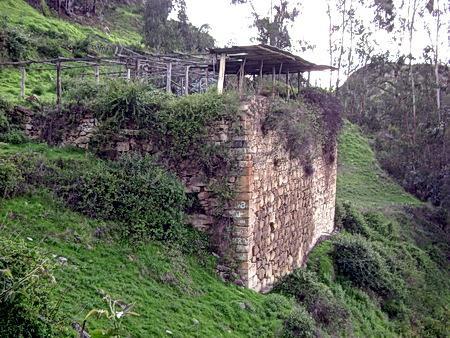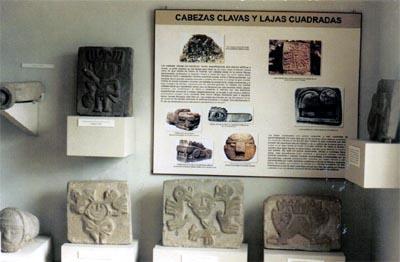Santiago de Chuco, La Libertad, Peru
Suggest Place to Visit
1056
Track to location with GPS |
 |
Santiago de Chuco is a province with many archaeological and natural tourist resources, it was created on November 3, 1900 thanks to the management of the parliamentarian Tomás Ganosa Cavero who took up the creation project initiated by the deputy for Huamachuco Manuel Natividad Porras. Its capital is the district of the same name. It is located at 3120 m.s.n.m. and 8 hours by car from the city of Trujillo. Its population in 2002 is 61,447 inhabitants with a population density of 23.1 inhabitants per square kilometer.
Like the vast majority of Peruvian provinces, it is hilly with highlands and grasslands and with some temperate parts, proving favorable for agriculture due to the possibility of planting various plantations such as potatoes, sweet potato corn, wheat, etc. Most of the people are engaged in agriculture and cattle raising. Plaza de Santiago de Chuco This also means that the gastronomy of this province is varied, but mainly the shambar and the guisado guisado stands out. Here important archaeological remains are located, which in part have been studied by Dr R. Topic and his wife, managing to clarify some questions about the first cultures of this area.
The main festival of this province is that of the Apostle Santiago el Mayor, patron saint of the province, which takes place at the end of July with colorful traditional dances.
Renowned figures such as Cesar Vallejo, the highest representative of our national poetry and with literary works of deep social content such as Paco Yunque, el Tungsteno, etc., emerged from Santiago lands. In this land and more precisely Angasmarca, he is also proud to contribute to the national art with Don Eladio Ruiz Cerna, who is one of the founders of the School of Fine Arts of the city of Trujillo. Casa de Cesar Vallejo Another character who studied at important universities in the country graduated as a professor in the specialty of literature, returning to pour his knowledge into teaching them in his native Santiago de Chuco is Don Carlos Barbaran Urquizo, who was also the founder of the private school Santiago the Mayor who later changed to the Cesar Vallejo National School. Also, together with Eladio Cerna, they are the authors of the Santiago de Chuco cultural yearbook.
The Pan American Silver Corp, a US company with operations in various parts of the world, operates in this province, extracting large amounts of copper, silver, coal and zinc in the Quiruvilca district.
Main attractives:
Puya Raimondi, Cachicadan Thermal Baths of Cachicadán.
183 km east of Trujillo (6 hours by car). They are located at 3178 m.s.n.m. in the district of Cachicadán. They are precisely on the slopes of La Botica hill, to the east of the San Miguel neighborhood and consist of hot springs rich in iron and reddish magnesium whose temperature is 70 degrees Celsius, probably medicinal for rheumatism and some dermatological cases. What we can assure with complete security is that a bath in this water is very relaxing and exquisite.
Calipuy National Reserve and Sanctuary.
It is a biogeographic space located between 840 and 3 600 m.a.s.l. (Suni and puna region) and with an area of 64,000 hectares, which houses and protects a forest of puyas de Raimondi where we can also appreciate a large number of Guanacos. It has a climate of abundant rainfall between the months of December and April.
Patron Santiago El Mayor Santiago de Chuco Other places:
Ventanillas De Paccha, consists of holes in the rocky wall of the Alto La Cueva mountain at 3370 m.a.s.l. close to the Paccha cemetery and an hour and a half from Cachicadán. Little is known of its builders and the purposes of their excavation in the rock. They are very similar to the windows of Otuzco in Cajamarca, of which it is said that they were "funerary niches", however, no human remains have been found. It is very likely that they have served as urns to place offerings to the "old man on the hill", a very common custom up until now in our mountains.
Sagarball or Cerro Ventana, next to Wallio, are the highest and most enigmatic mountains in the area. It comprises a series of constructions; small agglutinated, quadrangular, semi-curved enclosures that are erected from the middle to the top of the hill arranged on terraces that are connected by means of passageways, which also have drains for the evacuation of rain.
Danza los Pallos Wallio, is a hill located to the east and 3 hours from Cachicadán, at 3855 m.a.s.l. It is a mystical place of legends from where it is said that a flying snake associated with the cult of water and fertility emerged.
Llaray is a hamlet located an hour and a half northeast of Santiago de Chuco at 2920 m.a.s.l. Inside its church it houses a volcanic rock 2.26 m long with the figures of two opposite double-headed serpents carved on it, adorned by circles distributed along the body. The special posture of the heads with the jaws between open, resemble them a bit to the Moche iconography and its ceramic, textile and mural decoration of Lambayeque, and with a certain Wari influence, which at this time consolidated its presence in the northern highlands.
Alto los Potreros, is a populated center located at 2980 meters above sea level, a kilometer and a half northeast of the Llaray village. Composed of a set of architectural enclosures built on the basis of edged stone and strategically arranged on a hill, many of them have been dismantled to form part of the surrounding houses, the scarce surface ceramics resembles those of Cerro Icchal Santiago de Chuco Miraflores hill in San José de Porcón. They share the style Húyalas, Recuay, Cajamarca.
Cerro Icchal, is in San José de Porcón, Cachicadan district, at 4150 m.s.n.m. and 26 kms. south of Huamachuco. It consists of constructions and stone walls of approximately 5 x 5 meters.
Laguna El Toro. It is on the road to Huamachuco on the side of the road and very close to Quruvilca. On the walls of the rock that rises at one end of this lagoon, many people can see the natural figure of a bull in a brave attitude ready to charge. Many legends are told about the El Toro lagoon by the locals.
Santiago de Chuco, is at an altitude of 3099 meters above sea level, is the capital district of the province and has a population of 22060 inhabitants according to projections of the INEI to 2002. It was created at the time of independence although as a town it dates from the 25th of July 1616 when a group of Spanish immigrants in front of an altar raised in the place called ´´Picchi-Paccha´´, a thanksgiving mass was celebrated and the first foundation stone was laid. Then they distributed the land for the construction of houses, the plan of the city and the church was outlined. It is in this same year the town receives the definitive name of Santiago de Chuco.
Comments
We don´t have yet any comments about:
Santiago de Chuco
Santiago de Chuco
Be the first to leave a comment as it is very important to inform other people
Outros locais a visitar
Within a radius of 20 km from:Santiago de Chuco
Archaeological Monument of Pashash |
| 11,2 Km |
 |
Cabana Zonal Archaeological Museum |
| 17,0 Km |
 |
Hotel reservation near Santiago de Chuco within a radius of 20 km
No results
Why to book with TOURISTIC ROUTES
The best prices
Our partnerships with the world´s largest operators offer research on the best market prices.
More options
At Rotas Turisticos you can book the hotel, buy the air ticket, book the transfer from the airport to the hotel and vice versa, book the local excursions, rent the car, take travel insurance and consult the places to visit and where to go.
Holiday Tips & Destinations
Hundreds of holiday destinations with all the options that allow you to easily choose the destination that best suits your dream vacation.
TOURISTIC ROUTES
Links





